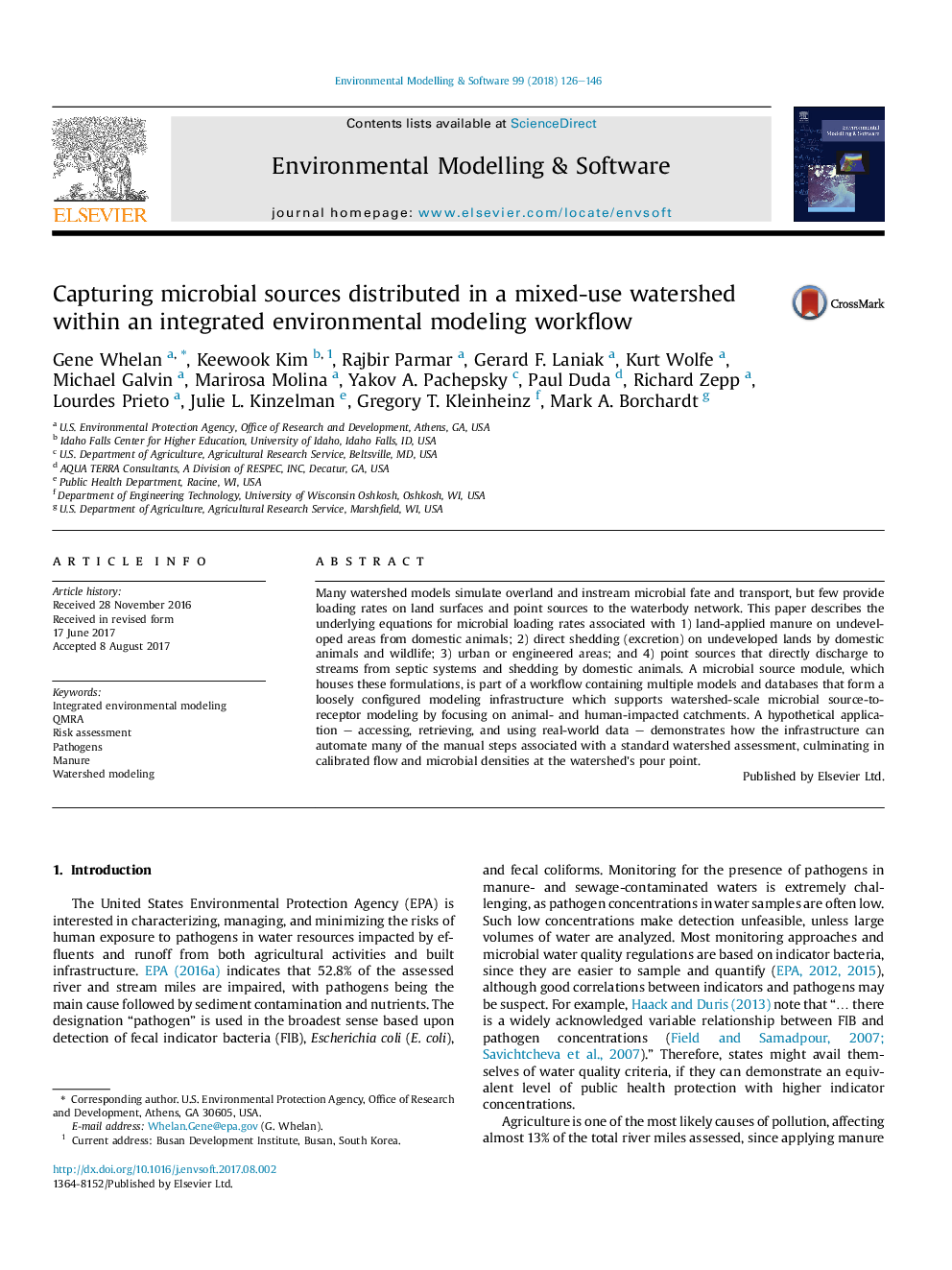| Article ID | Journal | Published Year | Pages | File Type |
|---|---|---|---|---|
| 6962288 | Environmental Modelling & Software | 2018 | 21 Pages |
Abstract
Many watershed models simulate overland and instream microbial fate and transport, but few provide loading rates on land surfaces and point sources to the waterbody network. This paper describes the underlying equations for microbial loading rates associated with 1) land-applied manure on undeveloped areas from domestic animals; 2) direct shedding (excretion) on undeveloped lands by domestic animals and wildlife; 3) urban or engineered areas; and 4) point sources that directly discharge to streams from septic systems and shedding by domestic animals. A microbial source module, which houses these formulations, is part of a workflow containing multiple models and databases that form a loosely configured modeling infrastructure which supports watershed-scale microbial source-to-receptor modeling by focusing on animal- and human-impacted catchments. A hypothetical application - accessing, retrieving, and using real-world data - demonstrates how the infrastructure can automate many of the manual steps associated with a standard watershed assessment, culminating in calibrated flow and microbial densities at the watershed's pour point.
Related Topics
Physical Sciences and Engineering
Computer Science
Software
Authors
Gene Whelan, Keewook Kim, Rajbir Parmar, Gerard F. Laniak, Kurt Wolfe, Michael Galvin, Marirosa Molina, Yakov A. Pachepsky, Paul Duda, Richard Zepp, Lourdes Prieto, Julie L. Kinzelman, Gregory T. Kleinheinz, Mark A. Borchardt,
